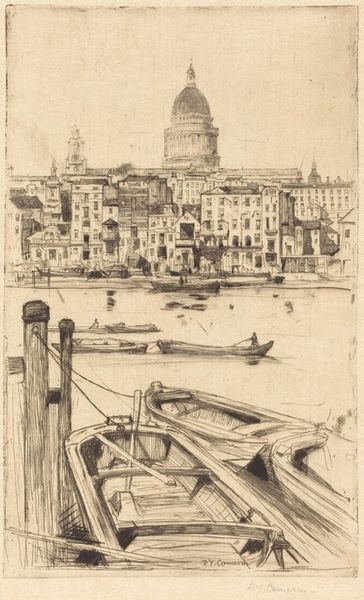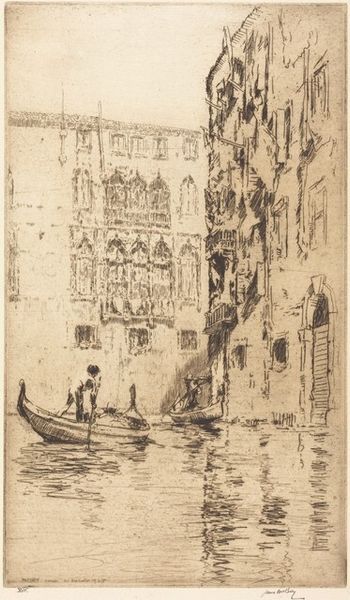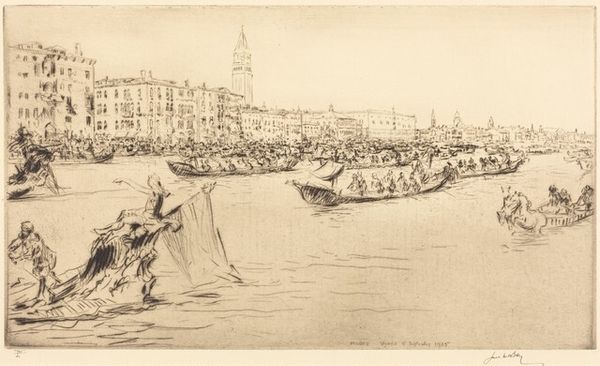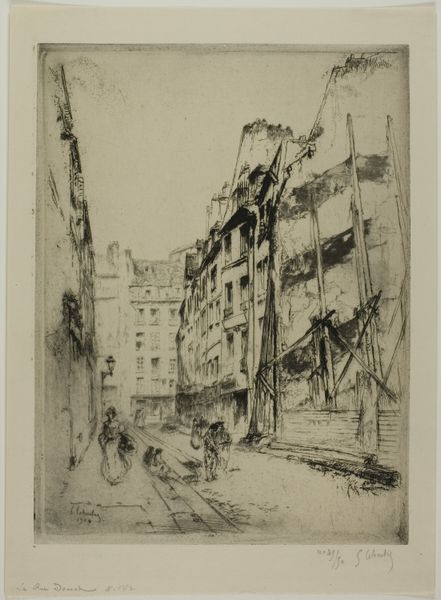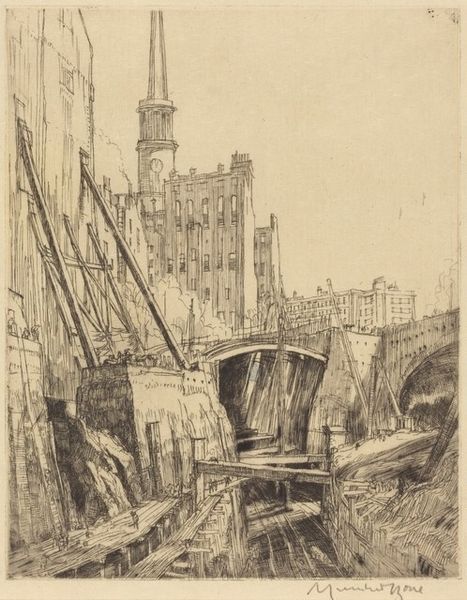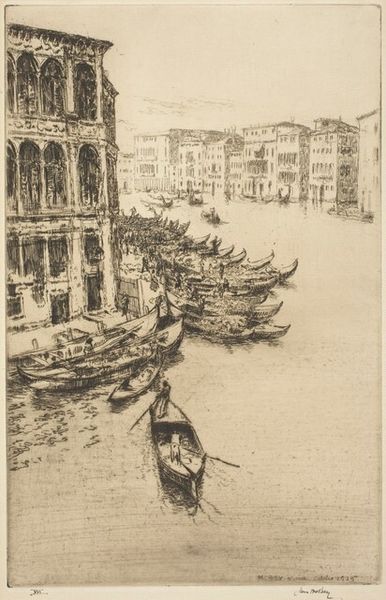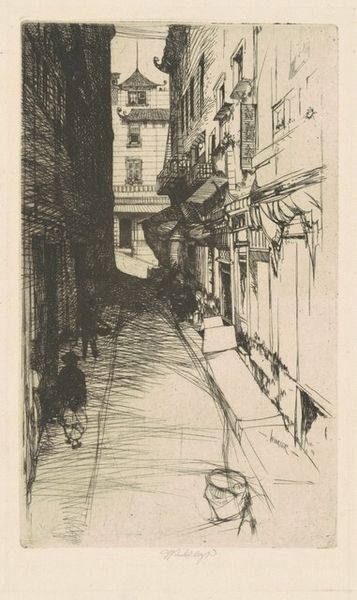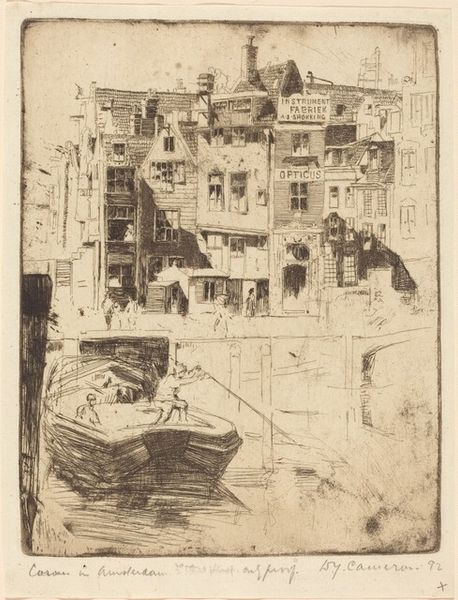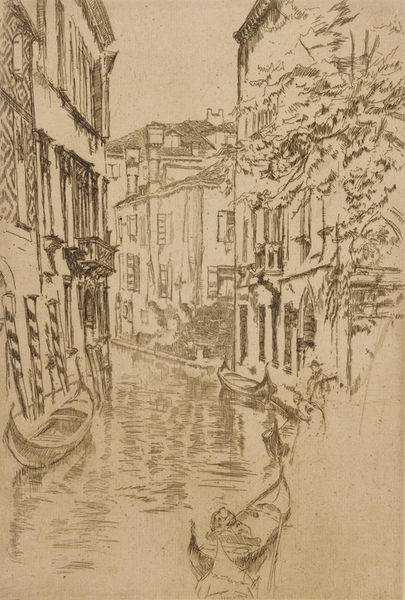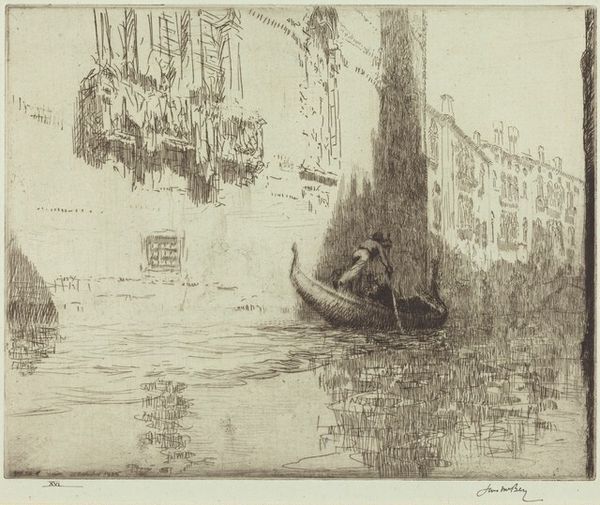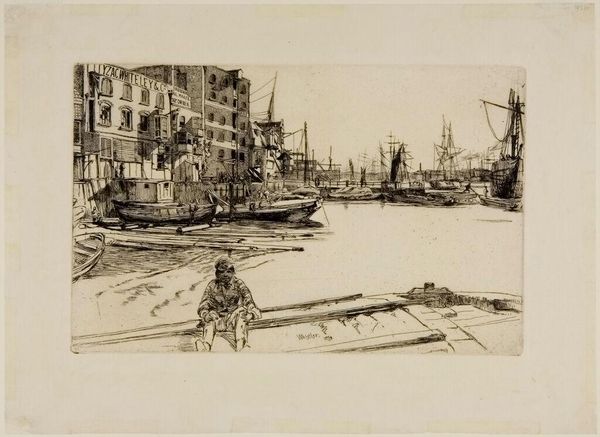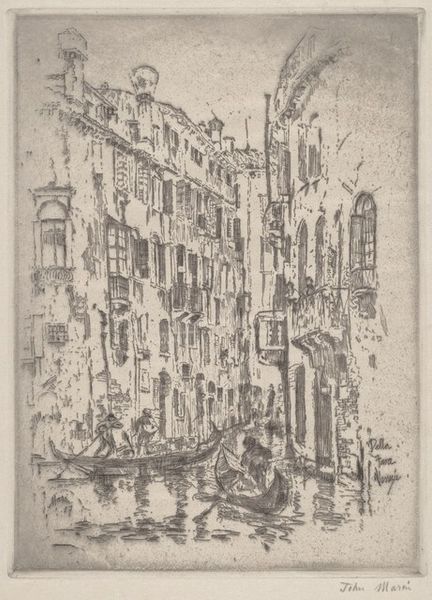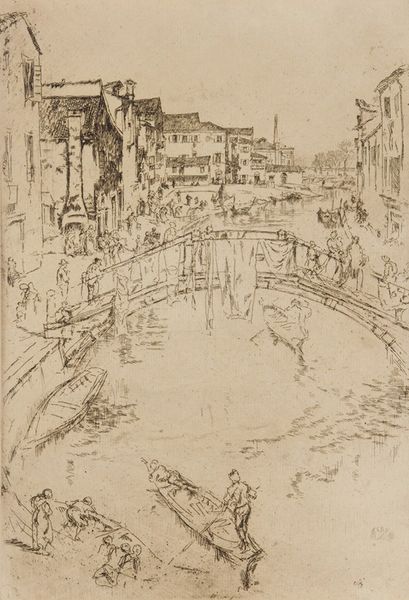
print, etching
# print
#
etching
#
landscape
#
etching
#
cityscape
Copyright: National Gallery of Art: CC0 1.0
Curator: This etching, "Rio dei Greci," was created by James McBey in 1925. It captures a Venetian canal scene. Editor: It has a hazy, dreamlike quality. The buildings seem to rise out of the mist, and the gondola with its figures creates a strong foreground anchor. The artist makes excellent use of line and shadow to create depth. Curator: As an etching, its creation involved a meticulous process of applying acid to a metal plate. Note the variation in line weight; McBey clearly understood how to manipulate the process for artistic effect. It speaks to a very specific form of labor and industrial practices adapted for artistic vision. Editor: Venice, of course, is so steeped in history. Water is life here, as it always has been. The figures in the gondola almost feel like Charon ferrying souls – or perhaps simply laborers going about their daily work against the backdrop of fading grandeur. Notice how the lines subtly render both their stillness and sense of direction. Curator: Absolutely. The position of the figures speaks to a highly developed local skill-set based on generations of experience in navigating these waterways. It is also worth noting how easily McBey was able to distribute this image, suggesting the rise in access to global markets afforded to the everyday creator. Editor: That's a sharp insight, highlighting the interplay of labor and distribution. Thinking about the etching's overall composition, that distant tower could represent hope, spiritual aspiration, or maybe even the city's connection to Byzantium and to Orthodox Christianity through the Greeks—"Rio dei Greci" means Greek River, after all. The visual symbolism feels multivalent. Curator: For me, the interest rests in understanding this kind of artistic production as an active agent in creating markets of desire. McBey, while ostensibly representing reality, created luxury objects through this medium. His market helped promote Venice as an attractive site of pilgrimage. Editor: It's fascinating to consider how these etchings function both as documents and as constructed images designed to evoke particular emotions. I find that ambiguity itself quite telling about cultural perceptions during that era. Curator: Indeed. By tracing the trajectory of materials and consumption, we gain critical insights into the complex realities of artistic expression within evolving historical contexts. Editor: Seeing how you focus on material circumstances has opened me to the more intricate economic and commercial subtexts beneath an aesthetic rendering. Curator: Likewise, thinking more symbolically provides avenues to think more broadly of the human story behind this etching.
Comments
No comments
Be the first to comment and join the conversation on the ultimate creative platform.
